
Water | Resources
Clean Air at Home

This is the outdoor air I have at my home where I currently live. I’m just a bit more inland
A reader wrote to me this week with some questions about purchasing an EnviroKlenz Mobile Unit. She had some questions about my personal experience using the filter in my home.
I replied, “I actually don’t own an air filter at all. I live in a place with VERY clean air. If I were to purchase an air filter, it would be an EnviroKlenz.”
She was surprised and asked, “I’m just curious- how are you able to have a home with such clean air?”
I replied, “I specifically create homes with nontoxic materials so I don’t need to filter.”
“At the moment I am living with my mother-in-law to help her stay at home and not go to a nursing home. Her house was built 25 years ago so there are no outgassing materials here. Plus I live in the “marine zone” of the Pacific Ocean, which means I live close enough to the coast where the outdoor air is as if I were standing on the beach.”
“That’s how I do it.”
But I will also say that after going through the firestorm last fall, which spread smoke throughout the entire San Francisco Bay Area for a week, I’m considering getting an air filter. Not for everyday, but for emergencies.
Also, chemical smells (and odors like skunks) do occasionally wander over to me on a breeze and I’d like to be able to close up my room and run a filter when that occurs.
Laminate (low-emission rating) Flooring OK?

Question from Hal
Hi Debra,
We’re considering laminate flooring but are also concerned about formaldehyde.
However, “Quick-Step Impressive Ultra” by Pergo quotes an emission value of “less than 0.01 ppm” in their datasheet and is Nordic Swan ecolabelled here in the Scandinavian countries. This is vastly less than the E1 standard of “less than 0.1 ppm” and I hope should make a difference.
I know you don’t recommend laminate in general, but as this seems to be our best alternative for flooring, would you consider it “safe”, or should we rule it out in your opinion?
I’ve also read that having certain plants and airing regularly will help.
Debra’s Answer
One of the difficulties in choosing toxic-free products is determining exactly what is a toxic exposure.
Chemicals, such as formaldehyde, have an inherent toxicity that has been established by the field of toxicology.
But there’s another factor in real life and that is the ability of the person exposed to tolerate the level of exposure. Put a healthy adult man, an adult woman, a senior, a baby, and a person with MCS in a room with this flooring and each of their bodies will respond differently.
It’s difficult for me to make a general recommendation in a situation like this which is borderline.
So here’s what I’ll say.
I wouldn’t put it in my house. I know from personal experience that formaldehyde is one of the major chemicals that make otherwise healthy people into people who are sensitive to all petrochemicals. I’ve seen this over and over. So I just wouldn’t go there. That’s why. It’s just on my personal NO list in big red letters.
Formaldehyde also causes cancer.
And regardless of what studies say, the leading edge of medicine is now acknowledging that you can do all the studies you want, but it all comes down to the individual body and it’s own unique characteristics and environment.
A few nights ago I realized something, after 40 years in this field. I realized that we know some products are outright poisons. But instead of banning them, our society put warning labels on them and established poison control centers to help people who are poisoned. And then we found out that some products—like cigarettes—cause cancer and other illnesses after many years of use. Again, warning labels.
And now there are certifications that say oh it’s OK to use these products because they are “low-emissions.” NO. Low-emissions means there ARE emissions. Emissions can build up in a space into high concentrations.
For me, personally, I will go to any trouble and any cost to have a formaldehyde-free floor. But that’s my choice and priority.
You may decide it’s OK to have a floor that has less formaldehyde. It’s certainly better than a floor with high formaldehyde emissions.
I’ll get off my soapbox now.
About the plants, it actually requires quite a number of plants to do much good.
It’s always better to reduce emissions at the source, rather than relying on plants or even air filters to do the job of removing pollutants from the air pm a regular basis. I’m not saying don’t use filters or plants, I’m saying that it’s more effective to reduce pollutants at the source if you have the option to do that.
Engineered Marble Threshold OK for My Baby?
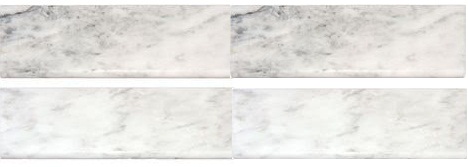
Question from Lex
Hi Debra,
I have already purchased a marble/resin threshold that I can use for an upcoming bathroom renovation. I am having trouble getting more info about the resin from the company in Italy.
I do not have sensitivities, but am just worried about exposing my baby to toxic materials once it is born. I am not installing it and will be out of the house for two weeks when it is being installed.
Is there any reason why I should worry about the marble/resin in a threshold? I see that there are greenguard certified thresholds, but my contractor really wants to use this one.
Debra’s Answer
The technical name for what you are asking about is “engineered marble.” It is different from the “cultured marble” of yesterday, which was made from the dust of various stones, in that engineered stone is made from recycled pieces of marble and stone discarded by quarries.
Using bonded marble allows a manufacturer to make a product that looks and feels like marble, with more uniformity and at much lower cost.
To make engineered marble, pieces of stone from the quarry are crushed, pressed, heated and bound together with just enough polyester resin to form slabs, which are then cut into pieces appropriate for their use. Once cut to the desired size, they are then finished with a protective coat of polyester resin.
Though polyester is typically made from petroleum, in the form of a resin it cures into a hard material that doesn’t outgas. Even if it did outgas, polyester is generally not toxic, except for those who are sensitive to petroleum.
I’m not concerned about engineered marble being a toxic material.
In this case a GREENGUARD certified threshold only means that the company paid for the certification. All engineered marble is pretty much the same.
Dyson Pure Cool LINK
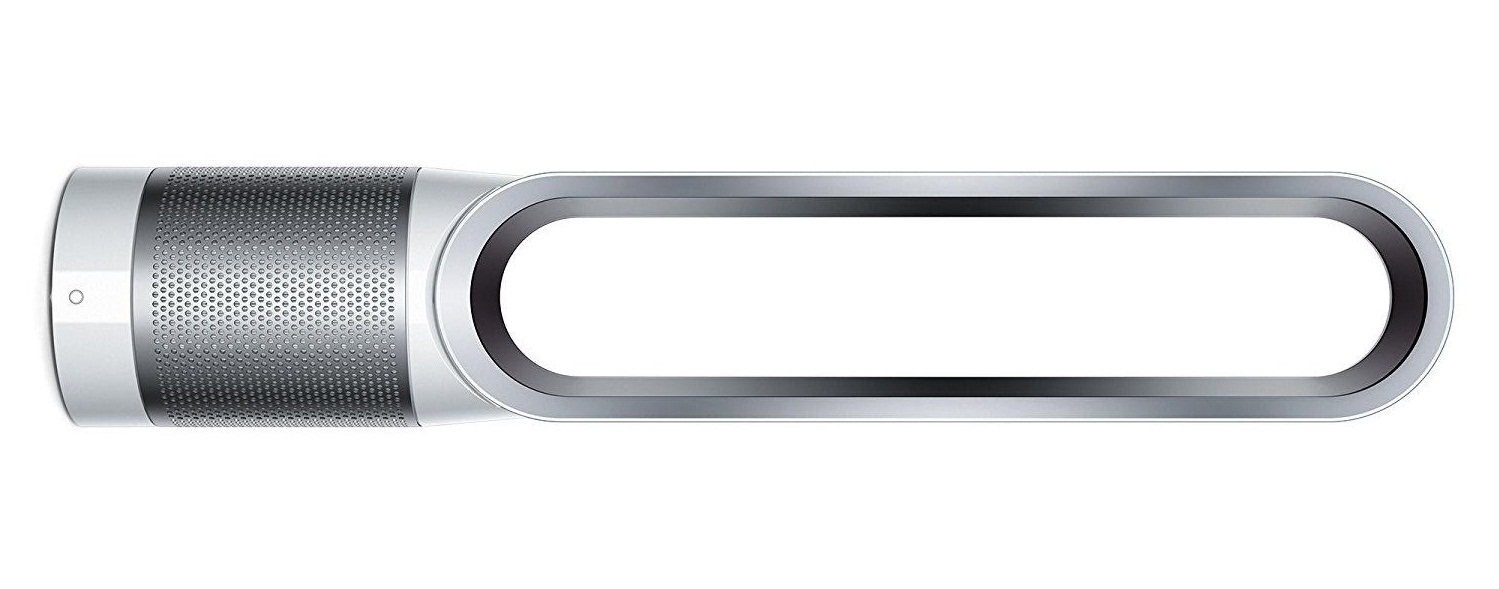
Question from Bonnie Johnson
Hi Debra,
I was watching Tv the other day and the add came on for the Dyson Pure Cool fan and purifier. The idea is the air goes thru the purifier part and comes out the top as a fan. It even has a little remote that measures air quality. Was wondering your opinion on this item.
Debra’s Answer
I took a look at this on the Dyson website.
This is a hard plastic unit that pulls air into the bottom through activated carbon (for gases ) and HEPA (for particles). Then it releases the purified air into the room.
It advertises that it cools the air, but when I talked with Dyson customer service they said it’s not an air conditioner, it’s a fan. It has a heating element in it also, but it’s not a substitute for a heater or an air conditioner.
It also has a nifty wifi-based app that measures air quality. So you can measure your indoor air quality, turn on the app, and see how the air quality is improved. Nice feature, but requires wifi. The newer models have more of a breakdown of the actual pollutants, rather than general categories of particles, gases and humidity.
I’ve been evaluating air filters for almost forty years, so I know something about them.
The primary thing is you need to have sufficient filter media for the space.
The filter part of this unit is a cylinder 8” in diameter and 10” high. It is filled with ordinary activated carbon and wrapped with a special HEPA developed for Dyson. By comparison, dedicated carbon filters made by other companies contain 3-4 times that amount of carbon.
Dyson also does not rate this filter for a particular square footage, as virtually all other filters do. Filters are generally designed to have x amount of filter media that will filter x number of feet of a closed room. Dyson customer service told me they don’t rate their filter for square footage because every building is different. If there is a leaky window, for example, the filter won’t work as well. But this is true of all filters.
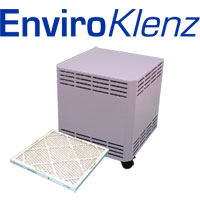 The customer service representative said she just puts hers in her house and it filters the whole house. Then she said it filters 165 sq ft per 30 minutes of use. That’s pretty slow. She did say that the unit is designed to last for 1 year if you run it 24/7 and then y ou need to change the filter cartridge.
The customer service representative said she just puts hers in her house and it filters the whole house. Then she said it filters 165 sq ft per 30 minutes of use. That’s pretty slow. She did say that the unit is designed to last for 1 year if you run it 24/7 and then y ou need to change the filter cartridge.
I would say if you want to keep cool, get an actual fan or air conditioner. If you want to clean the air, get an EnviroKlenz Mobile Unit.
Arctic Air Personal Evaporative Air Cooler
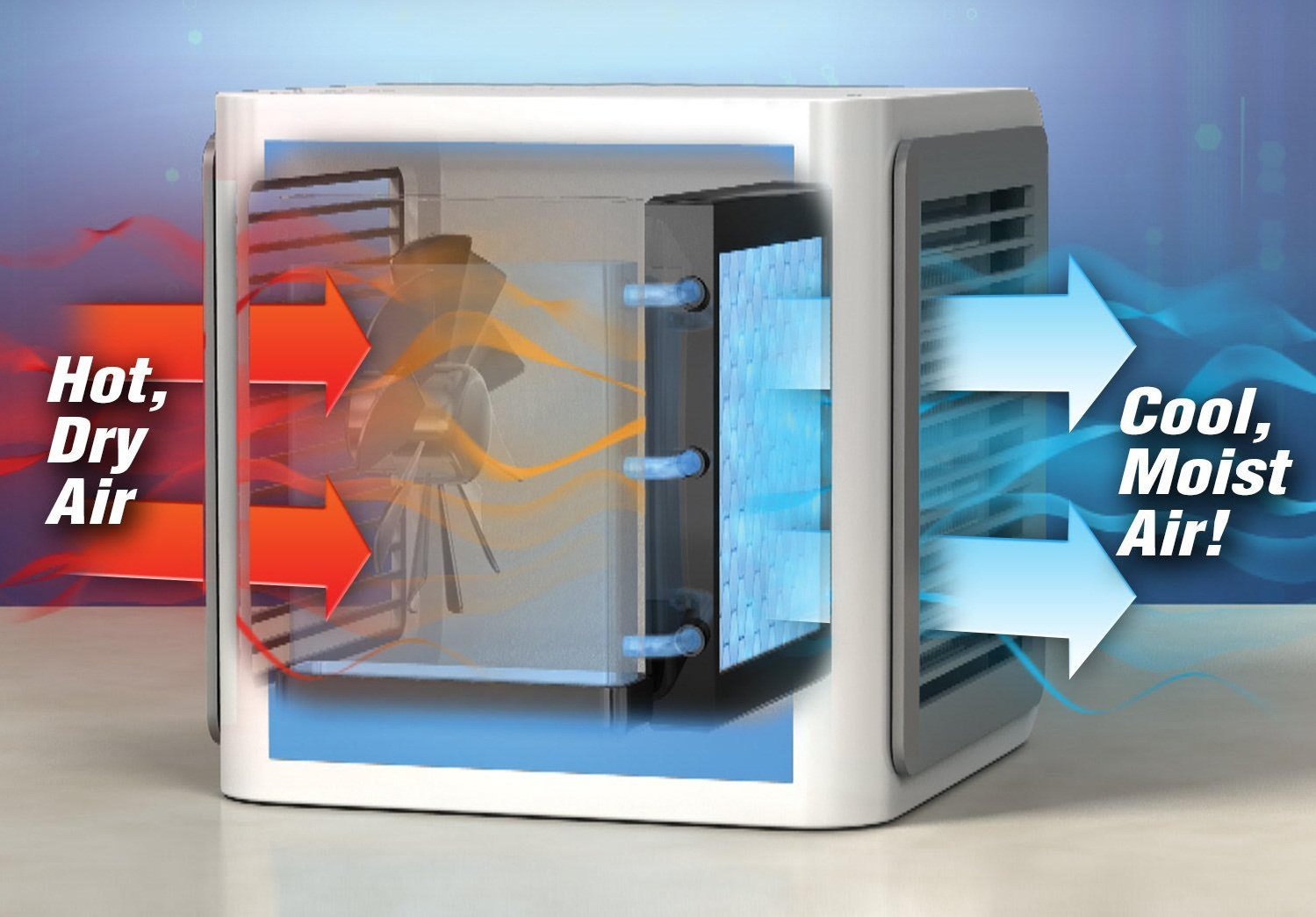
See comments for reasons to NOT buy this product.
I saw this on TV and thought it was a nifty idea, so took a look at it.
It’s basically an old-fashioned “swamp cooler” that cools air through the evaporation of water. The temperature of dry air can be dropped significantly through the evaporation off liquid water to water vapor. This can cool air using much less energy than refrigeration. In extremely dry climates, evaporative cooling of air has the added benefit of adding more moisture, which makes the air more comfortable for building occupants.
This works great in areas like the desert where the air is very hot and dry, and doesn’t work well in places like Florida and the South, where the air is already very humid.
To use the arctic air, you just fill it with water and plug it in. The unit pulls in warm air and produces cool air within a small area around you. Pretty simple. No Freon or other toxic refrigerants. You’ll also save money by cooling the space you are in, rather than the entire house.
My only reservation is that it’s made from plastic. Customer service couldn’t tell me the type of plastic, so I don’t know if it outgassed or not. If anyone has tried one of these, would you comment and let us know?
And a caveat: if you are going to use this, please use purified water as ordinary tap water would evaporate chlorine and other volatile chemicals into the air.
[link not given because even visiting site produces spam]
Need portable air conditioner on wheels for South Florida
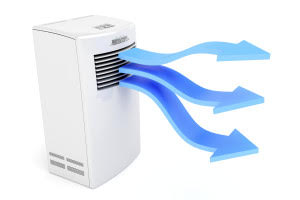
Question from Audrey
Hi Debra,
Please post this where appropriate. I am looking for a small portable air conditioner on wheels to put on my enclosed balcony. My washer and dryer are in a closet out there and it is intolerable during the summer months, which is very long here in South Florida. I thought I found a Delonghi on HSN, but when I looked it up on their site, it said the filter was antibacterial. I don’t think that is good with allergies and mcs. I am stumped. Anyone out there have any suggestions? Thank you.
Debra’s Answer
Readers, and ideas for this?
Nontoxic Breathing Devices to Exercise Lungs?

Question from Mor
Hi Debra,
I am looking for a breathing device like a frolov unit, the expand- a-lung, the powerlung, or the Ultrabreathe.
All the units that I’ve found seem to be made of plastic, usually cheap, sometimes described as having “a plastic odor that seems to never go away”.
Is there any breathing device for exercising the lungs that is non-toxic? Or at least tubings and parts which I can try to us to assemble such a unit? Or maybe a unit that is made of medical PVC can be much less irritating and worth trying?
Debra’s Answer
I don’t have any experience with these devices, but I took a look at the description and I am wondering if the same benefit can be achieved without the device?
I’ve actually done a lot of research on breathing in the past so I know there are many breathing exercises that can be done without devices. I used to study singing, so I know a lot about breathing.
I don’t know your specific situation so I don’t know if this will work for you. My suggestion would be to search the internet for breathing exercises you can do without a device that would accomplish the same benefit.
Readers, anyone have any experience using this type of device or any suggestions for this?
Need Some Window Shades
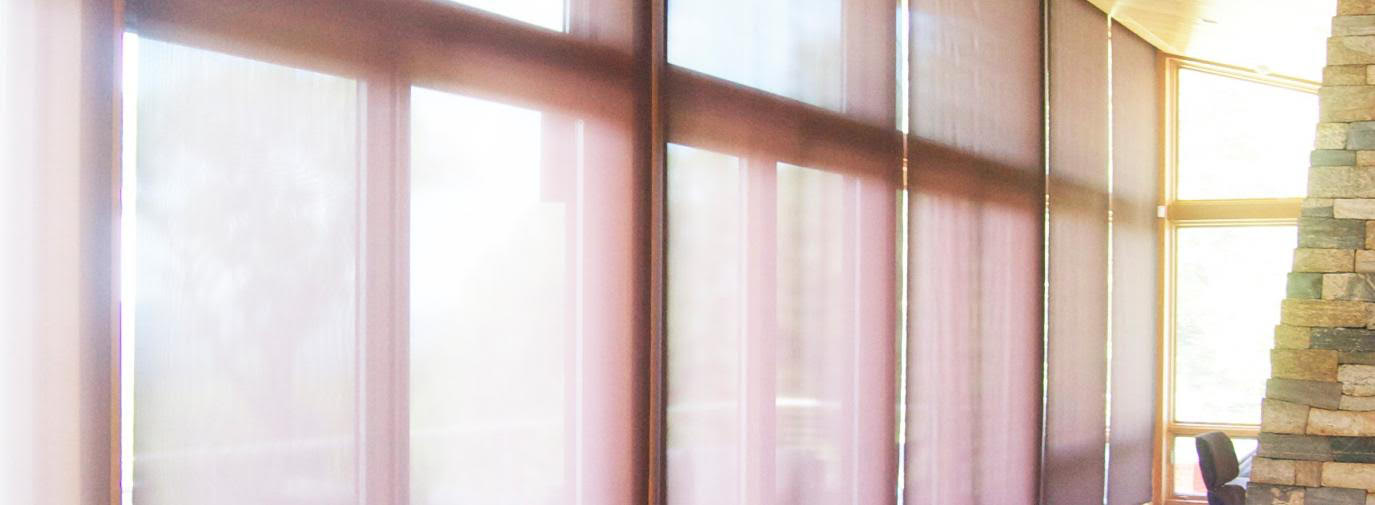
Earthshade Natural Window Fashions
Question from Jodi
Hi Debra,
I need to purchase window treatments for my home, and I see Earth Shades and The Shade Store listed on your site. Have you, or anyone you know, purchased shades from either of these places? I don’t see any comments on your site, and I can’t find many reviews online.
Thanks for your work!
Debra’s Answer
Rowena Finegan at Pine Street Natural Interiors recommends Earth Shades very highly. I saw some samples she has in her shop recently and they were beautiful. Very high quality and totally toxic-free. They also aware of and serve the needs of people with MCS.
I have no personal experience with The Shade Store.
Readers? What are your experiences with either of these shades?
Choosing Materials for a Toxic-Free Sofa at STEM
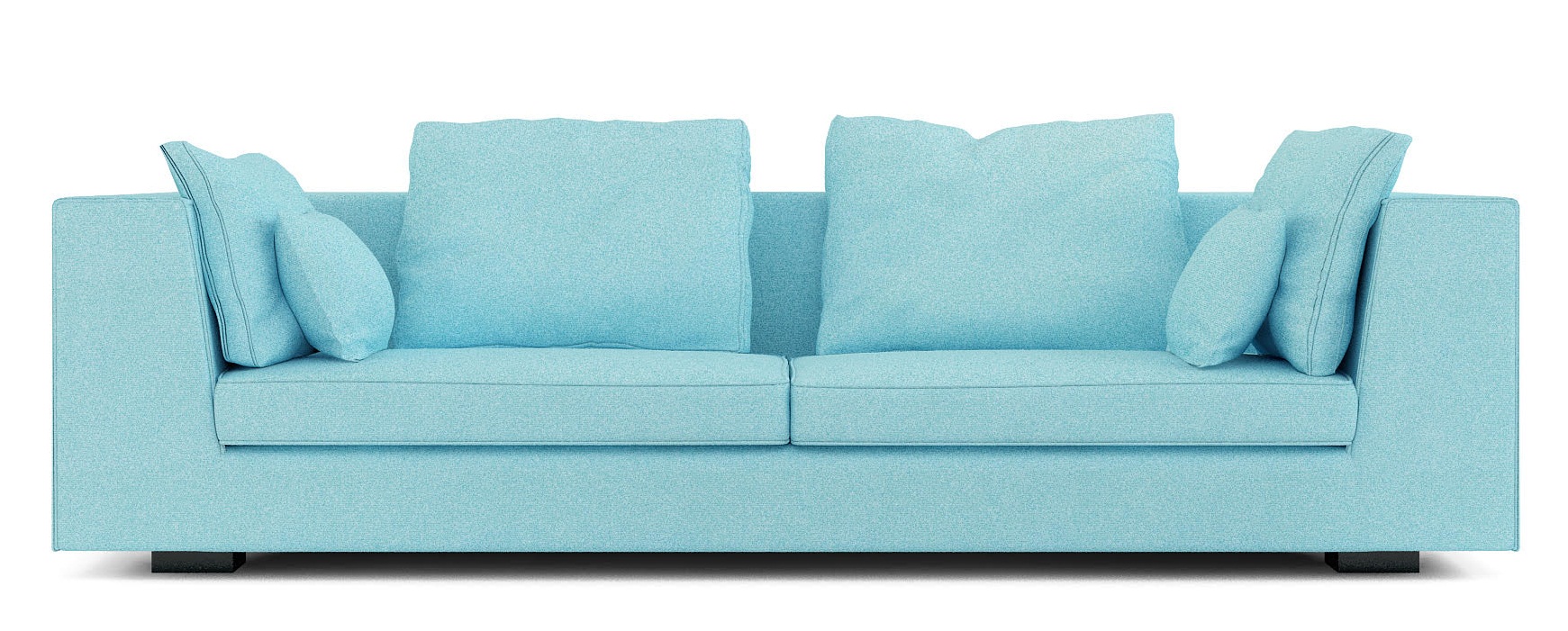
I’m customizing this “Nein” sofa at STEM.
I just added STEM to Debra’s List last week after a reader asked about it, and now I feel the need to give further guidance after receiving another question from a different reader.
I love your questions because I can see what you don’t know and how much I need to explain so you can get a good result.
And I learned this particular reader couldn’t tell which of all the choices were more or less toxic-free. So I’m going to explain the choices here.
First of all, the folks at STEM have been making less toxic sofas for about ten years, at Viessi. They have been listening to customers. And they know their stuff.
They will send you free samples of the materials so you can look and feel and test them out before you buy.
You can sit on whatever you order for 100 days and they will take it back if you don’t like it, and they will pay the shipping. They finance.
The baseline at STEM is: No fire retardants. No stain repellants. Beyond that, you can adjust the purity and the price by the materials you choose.
The starter price for a sofa is $1750. I’m going to choose this sofa and customize it with different materials and give you prices. This is the “Nein” sofa.
First you are asked to choose a FILLING. Options are:
- Poly Foam Cushions + Fiber Pillows
- Poly Foam Cushions + Down Pillows
- Organic Natural Latex Frame & Cushions + Wool Fiber Pillows
As you choose each option it will tell you the new price, and calculate a new monthly payment. No fill comes with the base price.
- Poly Foam Cushions + Fiber Pillows = $3091
- Poly Foam Cushions + Down Pillows = $2816
- Organic Natural Latex Frame & Cushions + Wool Fiber Pillows = $3454
Next you choose the FABRIC. A variety of polyester fabric are included in the base price. Click +MORE and use the “Eco-Friendly” menu to choose 100% Natural Content or Organic Fibers. There is one choice that comes included in the base cost (hemp and cotton with 15% recycled polyester—sorry, STEM, that’s not 100% natural). Other actually 100% natural options are 100% hemp (+276) or a linen/cotton blend (+480). The organic choices are also linen/cotton and also +$480, so here I would go with the organic linen/cotton. It’s only another $200. But you can save $480 if you’re willing to go non-organic and have that 15% recycled polyester.
So totaling this up, the range is
$2816 for the PolyFoam and Down Pillows with the standard Hemp/Cotton/polyester fabric
$3934 for the Organic Natural Latex Frame & Cushions + Wool Fiber Pillows with organic fabric
About $1000 difference.
Now here’s the difference in toxic exposure.
The big difference is in the filling,
- Poly Foam Cushions + Fiber Pillows = Seat pillows are filled with “CertiPUR-US certified poly foam” That’s regular polyurethane foam. Read more about CertiPUR-US here. Back pillows are filled with polyester.
- Poly Foam Cushions + Down Pillows = Seat pillows are filled with “CertiPUR-US certified poly foam” That’s regular polyurethane foam. Read more about CertiPUR-US here. Back pillows are filled with down feathers that are byproducts of the food industry.
- Organic Natural Latex Frame & Cushions + Wool Fiber Pillows = The entire frame, arms, and seat cushions with certified organic natural latex, made from the sap of rubber trees, with no harsh chemicals. They wrap the latex and fill the back pillows with domestic OEKO-tex certified wool which follows sustainability and cruelty free standards and is free of all chemical additives.
Remember the most toxic chemicals in a sofa are the fire retardants and the stain repellants. They are gone. Period.
Then there is the polyurethane foam fill, which is now only in the seat cushions, so it’s been reduced by half over a conventional sofa.
And then there is a choice of polyester fabric or all-natural or organic.
They do have clearance models, so you might be able to get a lower base price, and the prices also go up based on the design and size of the sofa.
I hope I’ve made this a little clearer and easier to for you to evaluate if this sofa company might be right for you. I do see there are good toxic-free choices here, but you need to choose them carefully.
Reducing Toxic Exposures Via Streamlining

I’ve mentioned in other posts that for the past year the big theme in my life has been streamlining, down-sizing, simplifying, getting to the essence of what is most important and needed in my life, in order to make more time and resources available for relationships, creative projects and other enjoyments of life.
But I also want to make the point that streamlining is a way to reduce toxic exposures as well.
In my response to a comment this week I said to a reader that she wasn’t condemned to toxic exposures from a cheap sofa because she couldn’t afford a natural sofa. I said she always had the choice to have no sofa at all.
While it may sound unusual to not have a sofa, I actually sold my lovely linen-covered, wool-stuffed sofa recently. I had this sofa custom-made about 20 years ago, so it wasn’t a question of it being toxic.
I sold my sofa because the reality was I hardly ever sat on it. It takes up a lot of space, it’s difficult to move, I have to pay storage fees at the moment to keep it, and I really didn’t need it.
I only got a sofa in the first place because of the idea that every home needs a sofa.
But I don’t.
And let me tell you, I feel free. I feel free to have what I need and to not have what I don’t need. Determined by me.
I remember years ago I looked around my house and felt overwhelmed by all the things I had which needed to now be replaced by nontoxic alternatives. But not everything needs to be replaced.
I just want to make the point here that sometimes the toxi-free alternative can be NOTHING.






